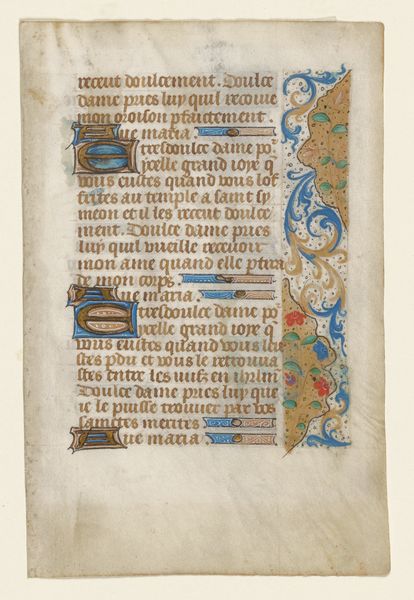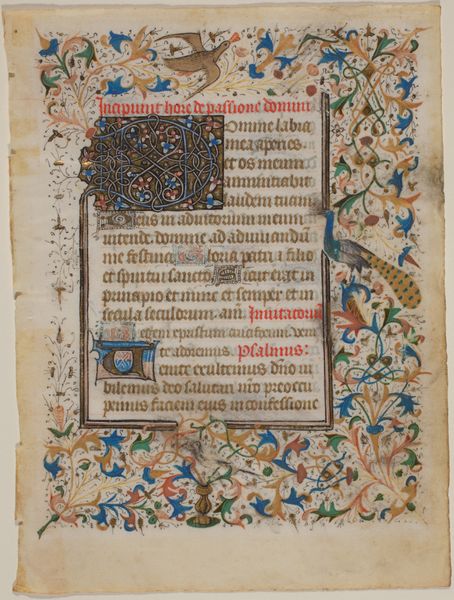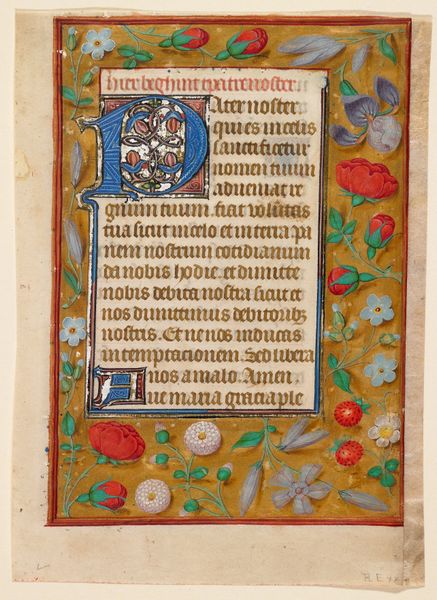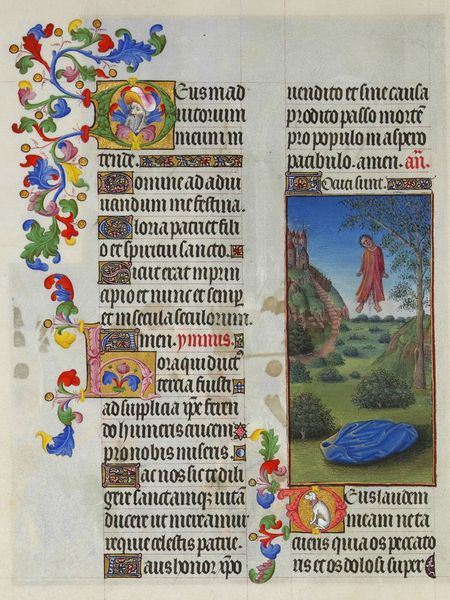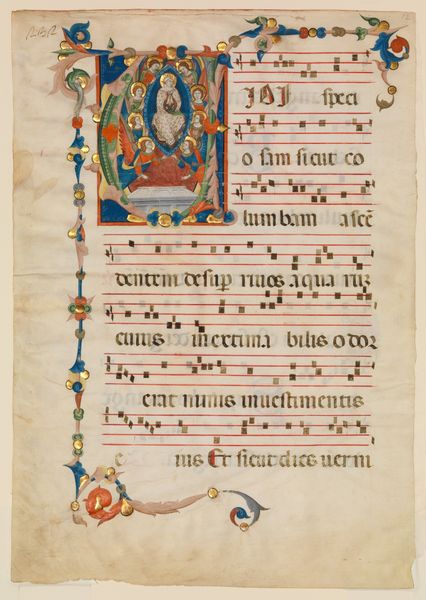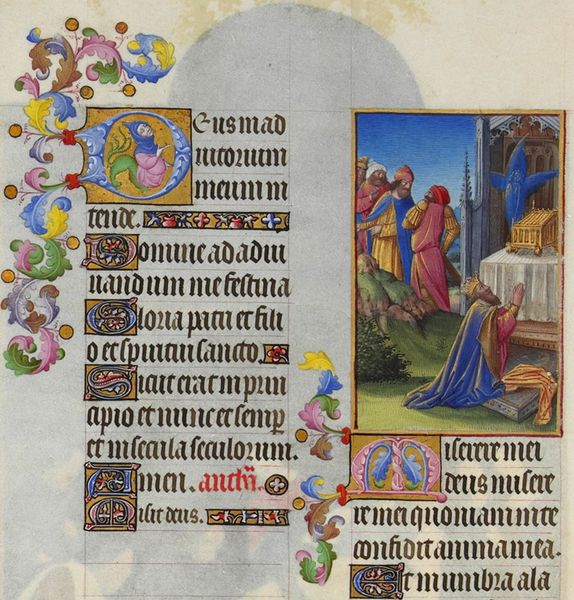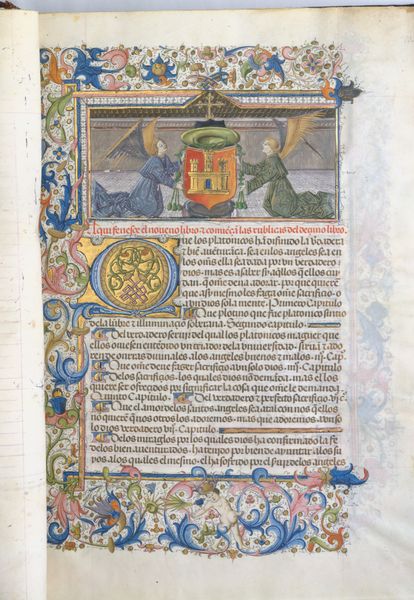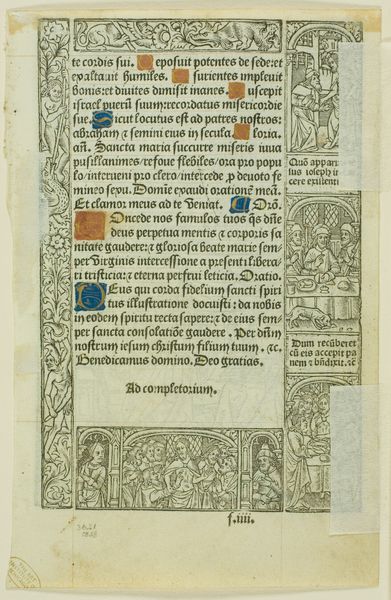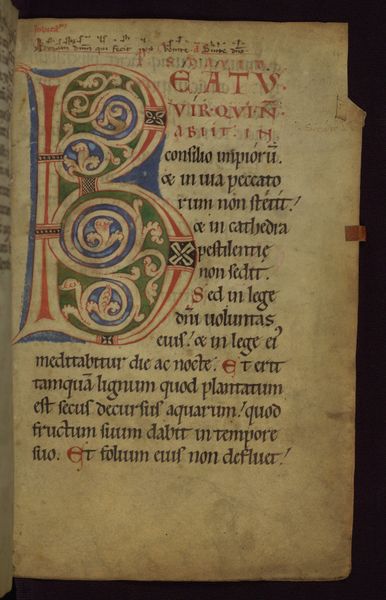
Leaf from a Book of Hours (recto and verso) c. late 15th century
0:00
0:00
drawing, painting, watercolor
#
drawing
#
medieval
#
water colours
#
painting
#
watercolor
#
coloured pencil
#
international-gothic
#
miniature
Dimensions: 5 x 3 3/8 in. (12.7 x 8.57 cm) (image)5 11/16 x 3 11/16 in. (14.45 x 9.37 cm) (sheet)
Copyright: Public Domain
Curator: Ah, I’m always captivated by this "Leaf from a Book of Hours." It dates back to the late 15th century, crafted in watercolor. Editor: It’s mesmerizing! The density of detail reminds me of a tiny, jewel-box world. A garden filled with strange alphabets and miniature dramas. It’s less about observation, more about concentrated imagination. Curator: Exactly. Notice the framing around the text. We have acanthus leaves, flowers, strawberries, and birds… each a miniature painting in itself! They echo elements you’d see in larger panel paintings of the era. What do these mean, you might ask? Editor: Well, strawberries, for example, symbolized righteousness, also perfection in some contexts, because they’re so lovely, but short-lived! That little bird perched up there... a symbol of the soul, perhaps, on its way to heaven. So many micro-narratives swirling around the main text. I mean this art anticipates comics! Curator: (Laughs) That’s an interesting take! Yes, a series of individual narratives that speak to devotion and, possibly, worldliness at once. Those vibrant blues, reds, and greens surely enlivened personal devotion. We can consider how such illuminations invited intimate participation in religious life... A one on one with a piece like this and god. Editor: I keep coming back to the tiny narrative scene tucked in at the center: Who are these figures, with such stylized features and gestures? Is there more detail present for our eyes to behold? What could this tell us, about a story contained inside the image, inside a moment inside of a prayer. There is an idea of compression, isn't there? Curator: Certainly, miniatures condense significance; to carry a whole narrative in something small becomes portable contemplation and memory. Medieval artists worked this very idea over generations. Editor: Indeed, and for a fleeting moment here I was allowed to be privy to it. And contemplate! What else can an artist ask for? Curator: Agreed, and I get to pass on this small door opening onto history.
Comments
minneapolisinstituteofart about 2 years ago
⋮
Manuscript books could be purchased from a given workshop in various levels of quality. The colorful leaf seen here shows an ingenious method of producing a pleasing book using artists of middling skill. By breaking the border down into small sections, the master could have an assistant copy relatively simple units of decoration in ever varying combinations. It is also interesting to note that the artist probably copied the tiny picture of the praying figures from another manuscript and since it was not designed as an initial, he crammed the "D" into the upper right corner.
Join the conversation
Join millions of artists and users on Artera today and experience the ultimate creative platform.

